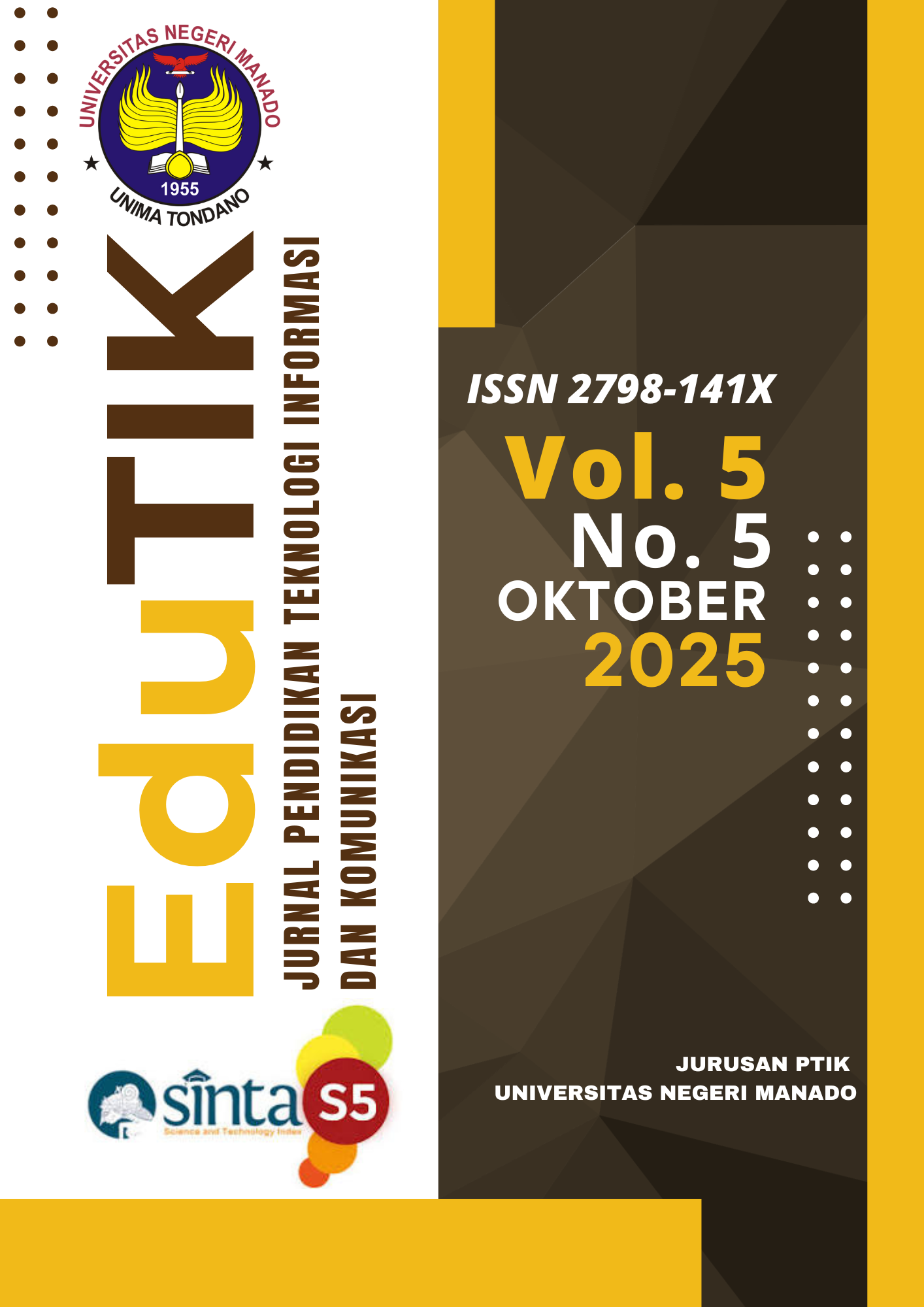Pemaknaan Distopia dan Ilusi Kebahagiaan dalam Film Don't Worry Darling
Keywords:
distopia, ilusi kebahagiaan, semiotika Roland Barthes, patriarki, filmAbstract
This study discusses the representation of dystopia and the illusion of happiness in the film Don't Worry Darling using Roland Barthes' semiotic analysis. Directed by Olivia Wilde, the film features a fictional community called Victory, which on the surface is depicted as an ideal world, full of order and happiness. However, behind this visualization lies a dystopian reality that restricts individual freedom, especially that of women. This study uses a qualitative approach with audiovisual text analysis techniques. Primary data consists of film scenes relevant to the issues of dystopia, the illusion of happiness, and power relations, while secondary data is obtained from supporting literature. The results of the study show that the visual signs in the film operate on three levels of meaning according to Barthes: denotation, connotation, and myth. At the denotation level, the film depicts harmonious family life and a stable social environment. At the connotation level, these signs carry meanings of repression and gender role restrictions. Meanwhile, at the myth level, the film reinforces patriarchal ideology through a narrative of family happiness that seems natural. The character Alice appears as a representation of resistance against the patriarchal system, attempting to dismantle the illusion of manufactured happiness. The film also shows how visualization and technology function as tools of social control that mask oppression with a facade of comfort. Thus, Don’t Worry Darling not only provides entertainment but also offers criticism of the ideology that manipulates happiness as a means of domination.
References
Budiarto, M. D., Siahaan, M. T., & Toni, A. (2025, August). Kekuasaan, Identitas, dan Emosi: Analisis Wacana Film ‘Bolehkah Sekali Saja Aku Menangis: Pendekatan Analisis Wacana Kritis Teun A. van Dijk pada Film Indonesia. In Prosiding Seminar Nasional Komunikasi (SENAKOM) (Vol. 4, No. 2).
Efendi, E., Siregar, I. M., & Harahap, R. R. (2024). Semiotika tanda dan makna. Da'watuna: Journal of Communication and Islamic Broadcasting, 4(1), 154-163.
Ginaya, N. (2020). Representasi Ideologi Dibalik Mitos dalam Mengemas Makna Subjektif Iklan Media Cetak dan Media Elektronik: Sebuah Alternatif Semiotika. Nady Al-Adab: Jurnal Bahasa Arab, 17(2), 31-46.
Guatri, G. (2023). Analisis Representasi Visual: Kajian Kekerasan Simbolik dalam Film. Journal of Religion and Film, 2(2), 293-312.
Ichwanul, M. (2017). Relasi Hegemoni dan Bangkitnya Resistensi dalam Novel Trilogi The Hunger Games (Doctoral dissertation, Universitas Negeri Jakarta).
Ismawan, K. L., Wirakusumah, T. K., & Risanti, Y. D. (2025). Penerapan Pendekatan Ekspositoris dan Partisipatoris dalam Penyutradaraan Film Dokumenter â â ‚¬ Å “Belongings Through Linesâ â ‚¬ Â. Edutik: Jurnal Pendidikan Teknologi Informasi dan Komunikasi, 5(3), 609-615.
Jamin, M. I., Mihardja, E. J., & Komsiah, S. (2024). Pemikiran dalam Studi Budaya: Analisis Ideologi, Hegemoni, dan Ekonomi Politik dalam Representasi Islam di Industri Hollywood. IKRA-ITH HUMANIORA: Jurnal Sosial Dan Humaniora, 8(2), 475-488.
Marbun, Y. T. D., Tampubolon, T. C., & Simanungkalit, K. E. (2025). Representasi Nilai Sosial Budaya dalam Film “Lamaran”: Refleksi Identitas Budaya Batak Toba di Era Modern. Boraspati Journal: Journal of Bilingualism, Organization, Research, Articles, Studies in Pedagogy, Anthropology, Theory, and Indigenous Cultures, 2(1), 93-102.
Minarso, B. (2022). MENTAL ACCOUNTING, ILUSI KEBAHAGIAN PADA KONSUMEN NOMOR BUNTUT ATAU TOGEL. Jurnal STIE Semarang (Edisi Elektronik), 14(2), 64-76.
Nofia, V. S. S., & Bustam, M. R. (2022). Analisis Semiotika Roland Barthes Pada Sampul Buku Five Little Pigs Karya Agatha Christie. Mahadaya: Jurnal Bahasa, Sastra, Dan Budaya, 2(2), 143-156.
Rospitadewi, E., & Efferin, S. (2017). Mental Accounting dan Ilusi Kebahagiaan: Memahami Pikiran dan Implikasinya bagi Akuntansi. Jurnal Akuntansi Multiparadigma, 8(1), 18-34.
Surahman, S., Corneta, I., & Senaharjanta, I. L. (2020). Female Violence Pada Film Marlina Si Pembunuh Dalam Empat Babak (Analisis Semiotika Roland Barthes). SEMIOTIKA: Jurnal Komunikasi, 14(1).
Syafuddin, K. (2023). Penggunaan Media Audio Visual (Slide, Film) Dan Media Rakyat Sebagai Alat Bantu Penyuluhan. Sanskara Ilmu Sosial Dan Humaniora, 1(01), 1-9.
Trimurtini, M. P., & Mulyani, P. K. (2024). Memberdayakan Diri melalui Mindfulness Panduan Pengantar untuk Mahasiswa. Cahya Ghani Recovery.
Wibisono, P., & Sari, Y. (2021). Analisis Semiotika Roland Barthes Dalam Film Bintang Ketjil Karya Wim Umboh Dan Misbach Yusa Bira. Jurnal Dinamika Ilmu Komunikasi, 7(1), 30-43.

















